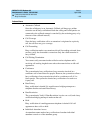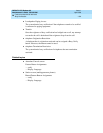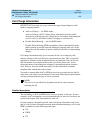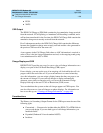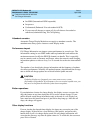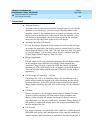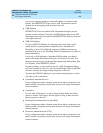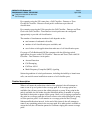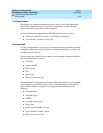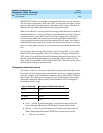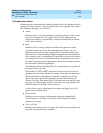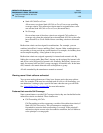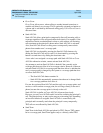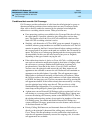
DEFINITY ECS Release 8.2
Administrator’s Guide
555-233-506
Issue 1
April 2000
Features and technical reference
1201Call Coverage
20
For countries using the USA tone plan, a Call Classifier - Detector or Tone
Clock/Call Classifier - Detector circuit pack is sufficient to provide call
classification.
For countries not using the USA tone plan, the Call Classifier - Detector and Tone
Clock with Call Classifier - Tone Detector circuit packs must be configured
appropriately to provide call classification.
The number of simultaneous monitored calls depends on the:
■ total amount of outbound call traffic,
■ number of call classification ports available, and
■ use of other switch applications that make use of call classification ports.
Coverage of Calls Redirected Off-Net competes with the following switch
applications for ports on the Call Classifier - Detector and Tone Clock with Call
Classifier - Tone Detector circuit packs:
■ Answer Detection
■ Call Prompting
■ CallVisor ASAI
■ Multi-Frequency Compelled (MFC) signaling
Serious degradation of switch performance, including the inability to launch new
calls, can result from an insufficient resource of call classifier ports.
Detailed description
When a call meets the redirection criteria of the principal, the call attempts to
route to one of up to 6 points in the coverage path. If no coverage points are
available, the call may revert to the called principal or group. If any point in the
path is available, the call either rings the individual phone or member of a group
specified for that point or queues on the group. Once a call is ringing or queued at
any point in a coverage path, the call never reverts to the called principal or group,
or to the previous point. A call remains at a coverage point for the Coverage
Subsequent Redirection interval. At the end of this interval, the call attempts to
route to any remaining points in the coverage path. If no other point is available to
accept the call, the call remains queued or continues ringing the current coverage
point.



